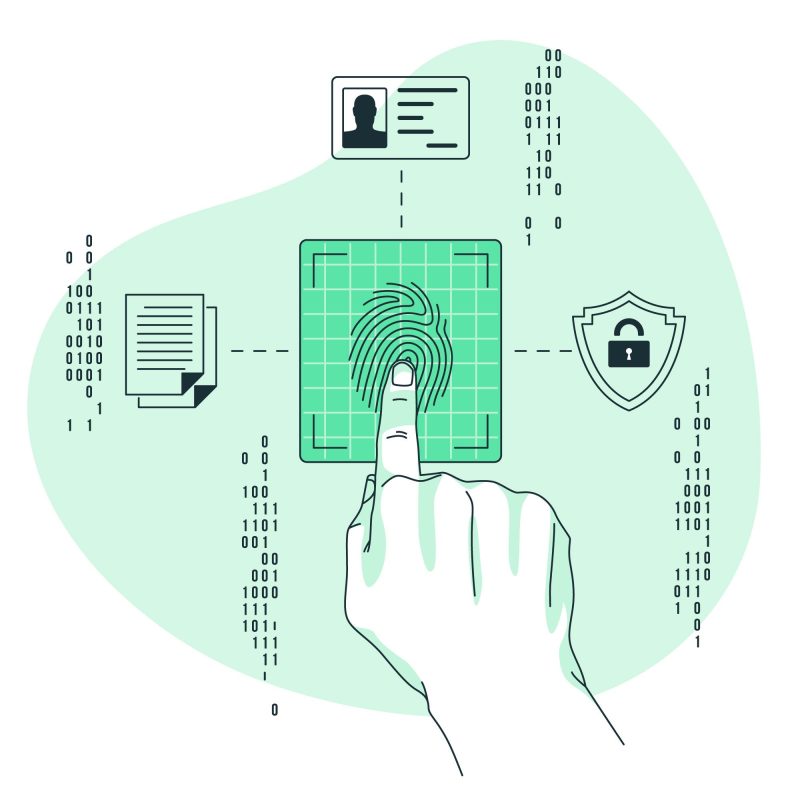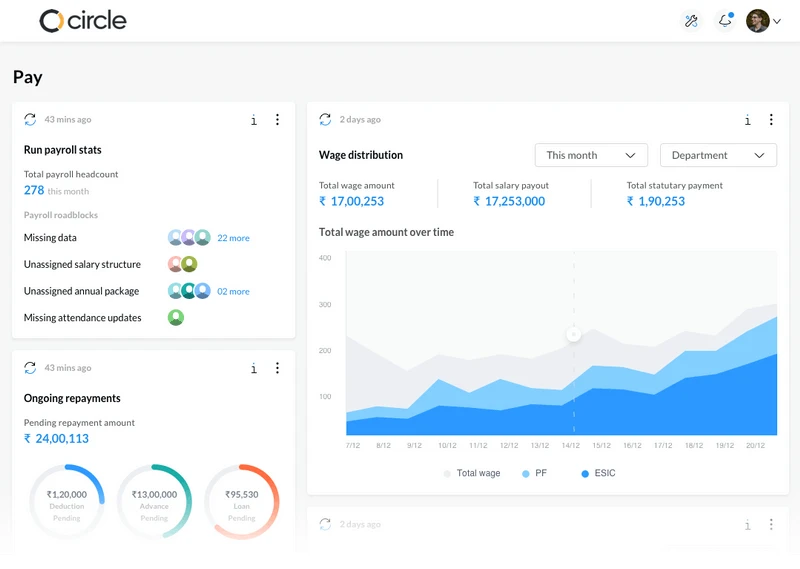Conventional identification methods, like manual sign-in sheets or swipe cards, are now replaced by more trustworthy and efficient ones. Traditional attendance methods can be unreliable and vulnerable to time theft, delays, and human errors. Systems for recording biometric attendance have shown to be a solid solution to these issues. By leveraging cutting-edge technology, a biometric app for attendance management offers secure and accurate identification based on employees’ biological characteristics.
The Indian biometrics market has experienced substantial growth in 2022, with the market size reaching INR 18,782.0 crores. If you’re looking to buy a biometric attendance system for your business, this comprehensive guide will provide the details and resources you need to make a wise choice. Read to know more about how to boost employee attendance.
Understanding Biometric Attendance Systems
Using distinguishing physical or behavioural traits of individuals, a biometric attendance system is a technologically advanced way to record and track employee attendance accurately. Through biometric authentication methods, attendance systems utilise voice, palm vein, iris, facial, and fingerprint recognition. Each method relies on capturing and analysing distinctive characteristics of individuals to verify their identity.
Benefits of Using Biometric Attendance Systems
Biometric attendance systems offer a wide range of benefits for businesses in India. Here are some key advantages:
- Enhanced Accuracy
Biometric technologies provide a very accurate method of identifying and verifying people based on distinguishing physical or behavioural features. The system generates accurate reports to be saved in the cloud for future use. This detailed report prevents errors in manual attendance monitoring, such as incorrect data entry and dishonest behaviour like buddy punching.
- Enhanced Security
Biometric authentication increases the security of access control and attendance tracking. Unlike traditional methods that rely on cards or passwords, biometric traits are unique to each person and difficult to replicate. This reduces the likelihood of unauthorised access and fortifies all security measures.
- Elimination of Proxy Attendance
Employees cannot clock in or out on behalf of others when implementing biometric attendance management systems or biometric attendance machines. Employees can no longer manipulate attendance records by entering punching another employee’s attendance card, a phenomenon known as proxy attendance. Biometric technologies promote fairness and accountability by ensuring that only approved individuals may record their attendance.
- Cost and Time Saving
By automating the biometric attendance device or attendance software tracking process, biometric attendance solutions save significant time for human resource management and employees. This saved time translates into cost savings for the firm due to more efficient resource allocation through an attendance policy. Moreover, the system’s real-time attendance data gathering reduces administrative work by eliminating the necessity for manual record-keeping.
- Improved Efficiency
Biometric devices improve attendance tracking, which raises operational efficiency. Employees no longer have to spend valuable work time standing in queues to clock in or out because the process is quick and easy. HR roles and responsibilities can easily produce attendance reports, evaluate data, and identify the attendance of employees and patterns to enhance resource management and workforce planning.
- Regulation Compliance
Biometric machine monitoring solutions help businesses adhere to legal and regulatory requirements. They offer an audit trail of attendance records to guarantee adherence to labour laws and regulations surrounding working hours, overtime, and employee leave. It helps companies retain transparency and steer clear of potential legal issues.
- Integration with Other Systems
Biometric attendance systems can be coupled with other human resource management, payroll, or access control systems to create a smooth and comprehensive labour management solution. Integration simplifies data synchronisation, provides a thorough view of staff attendance and related information, and speeds up processes.
Choosing the Right Biometric Technology
Different biometric technologies offer varying levels of accuracy, speed, and convenience. Here’s what to consider before buying the right one for your organisation:
- Fingerprint Recognition
Fingerprint identification systems or fingerprint scanners look at the unique patterns on each person’s fingertips and are widely used and inexpensive. Human resource management must ensure the system can handle different fingerprint types, such as wet, dry, oily, and worn-out.
Amidst the resurgence of fingerprint biometric machines for attendance in India’s public service, market analysis reports indicate a promising future for the fingerprint sensor market. Projections suggest that the market is poised to grow significantly, with an estimated revenue of US$5.92 billion by 2028 and a compound annual growth rate (CAGR) of 10.7%.
- Facial Recognition
As artificial intelligence has developed, facial recognition technologies have proliferated. They allow contactless attendance tracking and suit businesses with a large workforce.
- Iris Scanning
Iris identification systems take high-definition photographs of an individual’s iris, which is distinct for everyone. These tools offer high precision and are especially useful when fingerprint sensors are ineffective (for example, when hands are dirty or occupied).
- Palm Vein Authentication
Palm vein authentication utilises infrared light to capture vein patterns inside the palm. This technology is highly secure and reliable but may be more expensive than other options.
Factors to Consider When Choosing a Biometric Attendance System
- Scalability and Capacity
Consider your organisation’s size and the number of employees. Do not choose a system that supports a limited number of records because you have a limited workforce now. Make sure the system you select can support your current workforce and can expand along with it in the future without compromising performance.
- Reliability and Accuracy
Accuracy is key when recording attendance. Check the system’s ability to correctly identify and validate people without returning false positives or negatives. Accuracy in capturing data and reducing errors is essential for maintaining correct records.
- Security Measures
Security is paramount when deploying a biometric attendance system. Check out the system’s security features, including data encryption, access control, and anti-tampering measures.
- User-Friendliness and Ease of Integration
A user-friendly interface is essential for quick technology adoption and efficient system utilisation. Consider the system’s usability, compatibility with existing infrastructure, and ease of navigation to enable seamless integration into your business processes. A training session might help here so that employees do not wonder how to install a biometric attendance system.
- Capabilities for Reporting and Data Management
Examine the system’s data management capabilities and the data storage, retrieval, and backup options. Look for reporting tools that generate comprehensive attendance reports, analytics, and insights to help you make informed decisions.
- Cost-Effectiveness and Return on Investment
Factor in all ownership costs, such as the initial investment, ongoing maintenance fees, and potential upgrade or expansion costs. To calculate the system’s return on investment, consider the system’s long-term benefits for your business in terms of improved output, efficiency, and accuracy.
- Status and Assistance of Vendors
When selecting a biometric attendance system, go with an established vendor with a good reputation and track record in the industry. Examine customer comments, reviews, and case studies to gauge client satisfaction and the vendor’s ability to deliver high-quality goods and services. Ensure the vendor provides comprehensive support, including training, maintenance, and troubleshooting assistance, to ensure a smooth deployment process and ongoing system stability.
Wrapping Up
In conclusion, keeping up with technology is always the right path for businesses. Your company’s management of its personnel could undergo a full transformation if you invest in a biometric attendance system. The right biometric attendance solution will boost productivity while streamlining attendance monitoring processes and improving security.
Are you willing to improve the efficacy and accuracy of a biometric attendance system for your Indian company? Contact sumHR to learn how our cutting-edge biometric technologies and all-in-one HR software can transform your personnel management. Revolutionise your attendance tracking with our industry-leading technology and comprehensive support. Schedule a consultation with the best attendance and payroll software in India!








